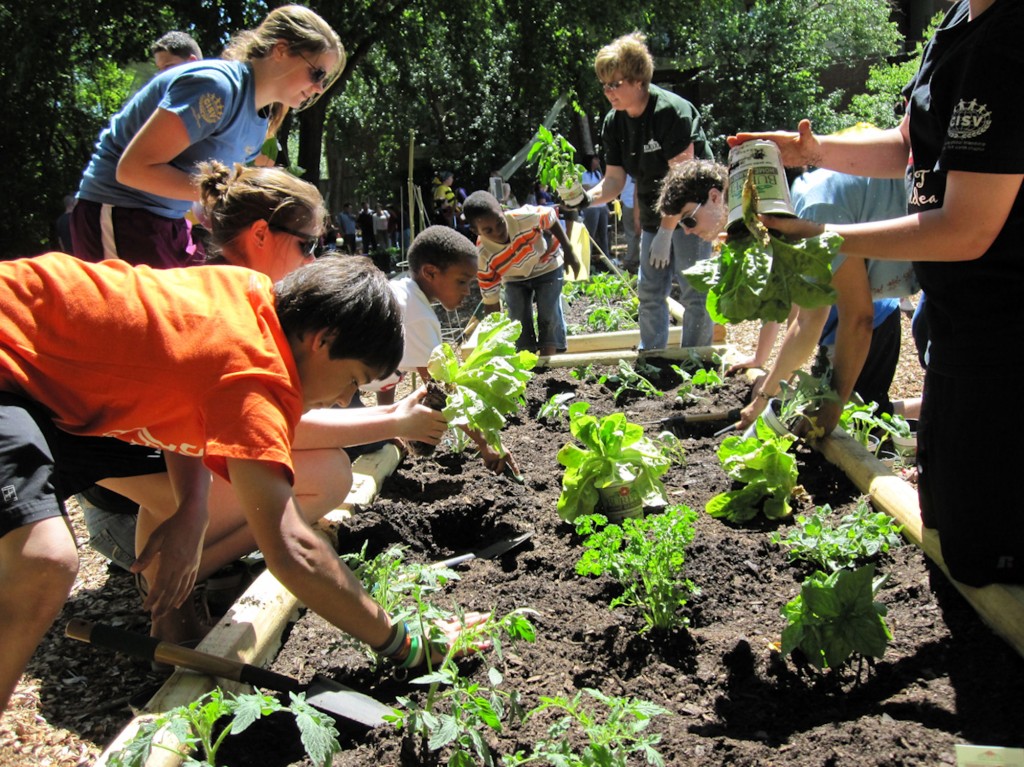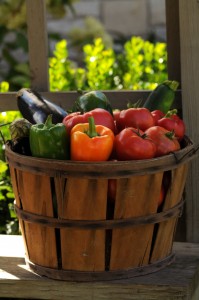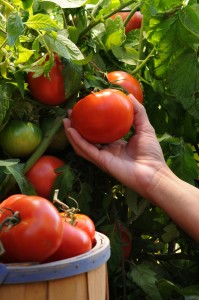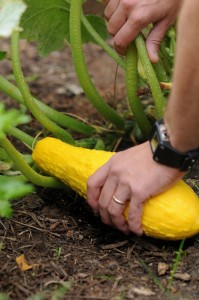Inside The New York Botanical Garden
Burpee
Posted in The Edible Garden on November 23 2010, by Plant Talk
Written by Burpee Home Gardens Team. Burpee Home Gardens was a Supporting Sponsor of The Edible Garden.
 Getting kids to make healthy food choices can be a struggle. One of the best ways to encourage children to eat more fruits and vegetable is to provide them with a sense of ownership and understanding of where their food comes from. Children-focused vegetable gardens are a great way to start.
Getting kids to make healthy food choices can be a struggle. One of the best ways to encourage children to eat more fruits and vegetable is to provide them with a sense of ownership and understanding of where their food comes from. Children-focused vegetable gardens are a great way to start.
In 2010, Burpee Home Gardens was happy to sponsor a handful of community and youth gardens all over the United States through its “I Can Grow” initiative. We saw the excitement in the participants’ eyes, and we were honored to be a part of programs like The New York Botanical Garden’s The Edible Garden, where the interest in cooking with home-grown produce was celebrated.
Now we’re thrilled to be offering even more chances for youth- and education-focused gardening programs to get the funding and plants they need to be successful and fun. The 2011 “I Can Grow” Youth Garden Award will support and sponsor urban school and community youth gardens with vegetable and herb plants, garden layout expertise, event promotion, and of course money for supplies!
Learn how to apply for this award below.
Posted in Gardening Tips on August 31 2010, by Plant Talk
Written by Burpee Home Gardens Team. Burpee Home Gardens is a Supporting Sponsor of The Edible Garden.
 How did your vegetable garden do this year? We’re sure you have numerous anecdotes about how much your garden yielded and how tasty the vegetables were. You can probably communicate about which pests visited, how the weather affected your plants, etc. That’s great! Gardeners love to share all their gardening stories with others.
How did your vegetable garden do this year? We’re sure you have numerous anecdotes about how much your garden yielded and how tasty the vegetables were. You can probably communicate about which pests visited, how the weather affected your plants, etc. That’s great! Gardeners love to share all their gardening stories with others.
Now. How did your vegetable garden do this year compared to two years ago? If that question is not so easy to answer, what you need is a gardening journal. This is a handwritten notebook or computer-based document that can be your go-to gardening resource. It’s your chance to record all of the great (and not so great) things that happened this planting season: From the number of plants you put in the ground and the various vegetable varieties you tried, to your weekly/daily maintenance of each plant and how they ultimately performed. Keeping track of this type of information helps make you a better, more prepared gardener when next season rolls around.
Read More
Posted in Exhibitions, The Edible Garden on August 10 2010, by Plant Talk
Written by Burpee Home Gardens Team. Burpee Home Gardens is a Supporting Sponsor of The Edible Garden.
 Harvest time is an exciting time in the garden. Those plants you have been taking care of, feeding, weeding, and watering are now returning the favor with ripe pickings for you to enjoy. Very quickly you’ll have a kitchen counter or bushel filled with red and juicy tomatoes, tasty peppers, flavorful cucumbers, and more.
Harvest time is an exciting time in the garden. Those plants you have been taking care of, feeding, weeding, and watering are now returning the favor with ripe pickings for you to enjoy. Very quickly you’ll have a kitchen counter or bushel filled with red and juicy tomatoes, tasty peppers, flavorful cucumbers, and more.
What to do with all this plenty—and when—present some of the last obstacles of the season for new vegetable gardeners. If you’re suddenly inundated with abundance, here are a few tips to remember to receive maximum flavor from your harvest:
Read More
Posted in Exhibitions, The Edible Garden on July 14 2010, by Plant Talk
| Written by Burpee Home Gardens Team. Burpee is a Supporting Sponsor of The Edible Garden. |
 The interesting thing about home vegetable gardens (and one that experienced gardeners learn to perfect), is that they evolve with the seasons. From cool to warm to hot, and back again, each of these cycles provides an opportunity to plant different crops for a maximized garden harvest.
The interesting thing about home vegetable gardens (and one that experienced gardeners learn to perfect), is that they evolve with the seasons. From cool to warm to hot, and back again, each of these cycles provides an opportunity to plant different crops for a maximized garden harvest.
One of the best-loved varieties that supply multi-seasonal recipes at your table is the trusty squash. We love the fact that you can grow a squash for almost every holiday recipe, from the Fourth of July cookout to Christmas dinner. Whether in the salad bowl or on the grill, in soup or in bread, squash can do it all. You can even eat squash blossoms—cooked or raw! Blossoms are a special treat reserved for only the best restaurants (and home gardeners) because of their perishable and delicate nature. But best of all, squash is one of the easiest and most prolific vegetables you can plant in your garden, and with success.
Native to the Americas, squash can be divided into two types: summer and winter. Summer squashes ripen quickly (as fast as 50 days). Winter squashes and their hard rinds ripen later. Summer squashes such as yellow, crookneck, and zucchini are eaten soon after harvesting—skin and all. They’re great eaten raw (with vegetable trays), steamed, grilled, or boiled. You can stuff them and bake them or grate larger-sized ones for delicious and flavorful breads. Winter squashes such as acorn and butternut, are often cut in half and baked, or boiled and then mashed like potatoes.
Read More
 Getting kids to make healthy food choices can be a struggle. One of the best ways to encourage children to eat more fruits and vegetable is to provide them with a sense of ownership and understanding of where their food comes from. Children-focused vegetable gardens are a great way to start.
Getting kids to make healthy food choices can be a struggle. One of the best ways to encourage children to eat more fruits and vegetable is to provide them with a sense of ownership and understanding of where their food comes from. Children-focused vegetable gardens are a great way to start.


